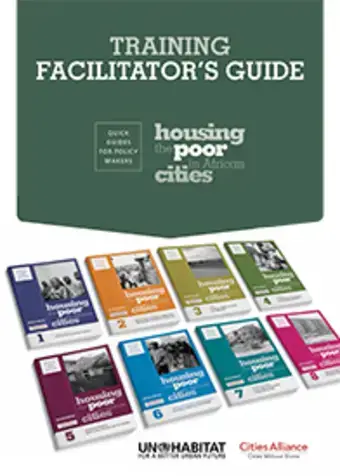 Nairobi 28 October 2015-- A global United Nations meeting bringing together more than 60 urban planning and disability experts opens today at the UN Office in Nairobi.
Nairobi 28 October 2015-- A global United Nations meeting bringing together more than 60 urban planning and disability experts opens today at the UN Office in Nairobi.
UN-Habitat participates in OIKONET conference
 Bratislava, 13 October 2015-- The second OIKONET conference on the topic “Global Dwelling” was held in Bratislava, Slovakia, with the participation of UN-Habitat late last month.
Bratislava, 13 October 2015-- The second OIKONET conference on the topic “Global Dwelling” was held in Bratislava, Slovakia, with the participation of UN-Habitat late last month.
Supporting communities in Nepal
Kathmandu, 3 August 2015 – Martha Ramtel, 41, who lost her husband fifteen years ago and also lost her father, who has been assisting her since then, during the devastating earthquake in April this year, comes from a Dalit family in Dumin Danda village, in Sindhupalchowk district, Nepal. Living with her four small children she works as a labourer and also sells buffalo leather as raw material to local entrepreneurs. The food grain she produces is only sufficient for three months in a year.
Namibia workshop examines pro-poor housing
Walvis Bay, 27 May 2015 - Thirty mayors and chief executive officers from Namibian municipalities have participated in the second workshop focusing on the Quick Guides for Policy Makers on Housing the Poor in African Cities in Walvis Bay, Namibia.
World Habitat Awards 2014/15 Winners Announced
 Tuesday 28 April 2015-- Winners of the 2015 World Habitat Awards were presented at the 25th Session of the UN- Habitat Governing Council in Nairobi.
Tuesday 28 April 2015-- Winners of the 2015 World Habitat Awards were presented at the 25th Session of the UN- Habitat Governing Council in Nairobi.
Second Habitat III Prepcom Pushes One Step Closer To A New Urban Agenda
Nairobi, 17 April 2015 – The second Preparatory Committee for Habitat III – the United Nations Conference on Housing and Sustainable Urban Development – has closed with major decisions being taken on process and timing.
 Nairobi, 5 August 2015-- UN-Habitat has published a
Nairobi, 5 August 2015-- UN-Habitat has published a 

 Nairobi, 20 April 2015 – In the sidelines of the 25th session, UN-Habitat hosted a session on ‘Human Rights in Cities and Cities for All’ which discussed human rights in the context of sustainable urbanization.
Nairobi, 20 April 2015 – In the sidelines of the 25th session, UN-Habitat hosted a session on ‘Human Rights in Cities and Cities for All’ which discussed human rights in the context of sustainable urbanization.